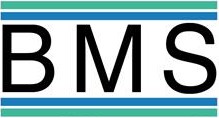Since 1994, the Burn Model System (BMS) has been collecting data on long term outcomes of burn survivors of all ages.
Data Dictionary Explorer
This online data dictionary explorer is searchable by domain or variable and includes both active and archived BMS variables. In order to make browsing easier, subsets of variables have also been grouped into the following categories: “Commonly Used Variables” (these include demographics and burn characteristics such as sex, total body surface area burned, and more), “Burn Variables” (these include the most commonly utilized variables collected about the burn injury, including location, etiology, and more), “Demographics” (these include sex, age, race, ethnicity, and more) and “PRO Scores” (these include the total scores of patient reported outcome measures collected by the BMS, including measures like Satisfaction with Life Scale, Community Integration Questionnaire, and more). To learn more about general methods of the BMS, read on below.
Data Collection
Data from both adults and children are included in the BMS National Longitudinal Database (BMS NDB). Information is collected from medical records and self-report for adults, from medical records, self-report, and proxy report for children ages 8-18, and medical records and proxy report for children ages 0-7. Self-report information about mental and physical health, rehabilitation services, depression, sleep, distress, and community participation has been collected at six months, twelve months, and twenty-four months post- injury since 1994. In the 2015, data collection was expanded to include data collection every five years for the life-span of the individual.
Eligibility Criteria and Enrollment Processes
Staff at each clinical center approaches all eligible patients, and patients are consented according to each center’s Institutional Review Board approved processes. Eligibility criteria has changed since the inception of the program. In general, the recruitment process involves providing the potential participant information about the BMS, including an explanation of the types of information collected and when the follow-ups occur. Potential participants are informed that participation is voluntary and of the data security measures the BMS takes, such as the fact that all data are stored on secured servers. The enrollment window closes after 30-days post-discharge, and potential participants who did not provide consent before that time are no longer eligible to participate.
Data Collection Procedures
After enrollment, data are first collected at discharge from acute care. Data are collected by in-person or telephone interview, or in-person, mailed, or online surveys. Information about the burn injury, such as % total body surface area (TBSA) burn, % TBSA grafted, number of days on the ventilator, number of days on the inpatient rehab unit (if applicable) and location of burn are gathered through medical record abstraction.
Participants are again contacted for data collection at six months, 12 months, 24 months, and every five-years post-injury. Because the time between the time points is relatively long, BMS uses multiple retention strategies in order to prevent drop-out, such as regular contact with the participant through clinical center newsletters, birthday cards, and social media. When BMS centers are unable to contact the participant, they use locating services and contact of friends or family members. Participants can withdraw from the study at any time, and participation is completely voluntary. Data collection methods for follow-up are the same as at discharge (i.e., in-person interview, telephone interview, or in-person or mailed paper and pencil survey). The BMS has Standard Operating Procedures (SOPs) in place, including one that sets bench-marks for follow-up rates. The BMS procedures include in-depth strategies to reduce missingness and drop-out in order to reduce selection bias in the database. Specific strategies include multiple follow-up attempts for missing data in received surveys, flexible interview appointments including nights or weekends, newsletters with research results and personal vignettes from burn survivors about the benefits of research, and use of locator services. If data collectors learn that a participant is deceased through a friend or family member contact or from a locating service, attempts are made to determine and verify cause of death.
Variables and Measures
Over time the variables and measures included in the BMS NDB have evolved, although in general data collected have always included items about pre-injury history, injury characteristics and treatment, demographics, general health (physical, mental and social), and quality of life. An expert panel, including physicians and nurses treating people with burn injuries, researchers and research staff, and measurement experts, determine the health and quality of life domains that should be assessed by the survey, and how the data could best be collected (i.e., by self-report or by proxy). Available self and proxy instruments measuring those domains are identified, and preference is given to standardized instruments that were developed sound psychometric properties, validated in people with burn injury, Item Response Theory (IRT) based, publicly available, and free for research use.
